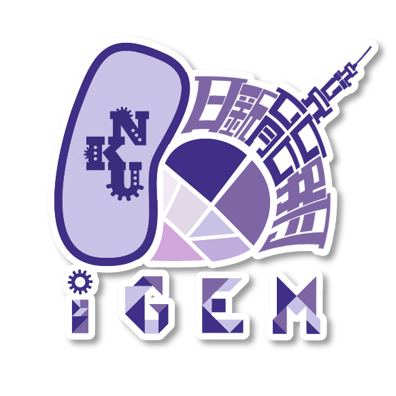Description
Abstract
This summer, our team has been aiming to engineer bacteria for supplement and absorption of autoinducer-2 (AI-2) in the natural and artificial environment. We have mainly designed two cell machines. AI-2 Supplier is the cell machine which can directly supply and enrich the AI-2 molecule while AI-2 Consumer is another cell machine which can sense, absorb and degrade the AI-2 in the environment. By taking advantage of the special characteristics of AI-2 controllers, we hope to directly control the population behavior of bacteria in group level.
What's more, biosafety is further taken into consideration in our project. By applying gene circuits to control essential gene expression under the assigned biocontainment conditions, we can block essential gene expression to kill the cell upon loss of the biocontainment signal.
AI-2 Concept
Success in nature depends on an ability to perceive and adapt to the surrounding environment. Bacteria are not an exception: they recognize and constantly adjust to changing situations by sensing environmental and self-produced signals, altering gene expression accordingly. Autoinducer-2 (AI-2) is a signal molecule produced by LuxS, an enzyme found in many bacteria species and thus is proposed to enable interspecies communication. Two classes of AI-2 receptors and many layers and interactions involved in downstream signaling have been identified up till now. So far, AI-2 has been implicated in the regulation of numerous niche-specific behaviors across the bacteria kingdom.
In Escherichia coli, LuxS generates AI-2 from metabolic precursors. AI-2 molecules are then exported out of the cell by TqsA. AI-2 is primarily taken up through the ABC-type transporter Lsr, and then phosphorylated by LsrK to AI-2-P. AI-2-P depresses the response regulator LsrR, thereby activating transcription of the lsr operon. AI-2-P is degraded by LsrF and LsrG.

Motivation
Coordination between cell populations via prevailing metabolic cues has been noted as a promising approach to connect synthetic devices and drive phenotypic or product outcomes. However, there has been little progress in developing 'controller cells' to modulate metabolic cues and guide these systems.
Metabolic engineering exploits the genetic modification of cellular pathways to improve production of metabolites and proteins. Many noteworthy examples have been demonstrated wherein these cells serve as 'factories' for the environmentally sustainable production of energy, materials, and chemicals. Towards this aim, metabolic engineering has incorporated finely tuned synthetic controllers and cells in the creation of artificial networks. The general structure of these synthetic networks is based on control devices that respond to specific stimuli in a predictable fashion.
However, the task of coordinating among and between cell populations remains a critical challenge that can limit the production of desired end-products. One creative approach to address both of these challenges is through the leveraging of cellCcell communication networks, and these have been the target of a variety of dynamic control systems.
AI-2 is synthesized and recognized by a wide variety of bacteria, which is known as a universal language in bacteria populations; correspondingly its use as a potential target for modulating Quorum Sensing (QS) activities among different cell types is of interest. In this project, we have developed bacteria AI-2 suppliers and AI-2-consumers, which can be deployed to control AI-2 concentration in a predictable fashion using the now well-characterized QS mechanisms of E. coli.
We have addressed this through the model-based design, construction, and characterization of these 'controller cells' to modulate the external AI-2 environment.
Design & Functional Prototype

We developed 'controller cells' that manipulate the molecular connection between cells by modulating the bacterial signal molecule, autoinducer-2, which is secreted as a QS signal by many bacteria species. Specifically, we have engineered E. coli to overexpress components responsible for AI-2 production (luxS, mtn), uptake (lsrACDB), phosphorylation (lsrK), and degradation (lsrFG), thereby attenuating cell—cell communication among populations.
Part 1 AI-2 Supplier: We constructed two AI-2 Suppliers by overexpressing the components responsible for AI-2 production (luxS, mtn). In the chart above, 'Native' indicates native production while 'Induced' indicates over-expression. See more.
| AI-2 Supplier | LuxS | Mtn |
| #0 pTrcHisB | Native | Native |
| #1 pLuxS | Induced | Native |
| #2 pLuxS-Mtn | Induced | Induced |

Part 2 AI-2 Consumer: We constructed five AI-2 Consumers by overexpressing the components responsible for AI-2 uptake (lsrACDB), phosphorylation (lsrK), and degradation (lsrFG). In the chart above, 'Native' indicates native production, 'Induced' indicates over-expression by inducible promoter and 'Constitutive' indicates over-expression by constitutive promoter on plasmid. See more.
| AI-2 Consumer | lsrACDB | lsrK | lsrFG |
| #0 pTrcHisB | Native | Native | Native |
| #1 pLsrACDB | Induced | Native | Native |
| #2 pLsrFG | Native | Native | Induced |
| #3 pLsrK | Native | Induced | Native |
| #4pLsrACDBFG | Induced | Native | Induced |
| #5pLsrACDBK | Induced | Constitutive | Native |
| #6pLsrACDBFGK | Induced | Constitutive | Induced |

Part 3 AI-2 Responser: We successfully cloned the bidirectional promoter plsr from E. coli MG1655. Thus the expression of GFP is under the control of plsr. When phosphorylated AI-2 binds LsrR, expression of GFP ensues. In Device B, additional lsrR expression enables additional repression of target genes for tighter regulation and delayed response. In Device A or Device B, the expression of GFP can directly response to the AI-2 level in the environment. In our project, when we co-culture AI-2 Controller with Device A or B, we can know how the 'controller cells' manipulate the AI-2 level in the extracellular environment. See more.

Part 4 Biosafety System---Tunable essential protein degradation in AI-2 Controllers: With the advent of synthetic biology, genetically modified microorganisms are being increasingly used for biomedical, industrial and environmental applications. Deployment of these engineered microbes in large scales and open environments calls for the development of safe and secure means to restrain their proliferation. An alternative approach to biocontainment is to use gene circuits to maintain essential gene expression or block toxin gene expression under the assigned biocontainment conditions.
This summer, we added mf-lon ssrA tag into 5 essential genes using CRIPSR/Cas9 method. By applying gene circuits to control mf-lon protease expression under the assigned biocontainment conditions, we can block essential gene expression to kill the cell upon loss of the biocontainment signal. See more.
References
- Thompson J A, Oliveira R A, Djukovic A, et al. Manipulation of the quorum sensing signal AI-2 affects the antibiotic-treated gut microbiota[J]. Cell reports, 2015, 10(11): 1861-1871.
- Zargar A, Quan D N, Emamian M, et al. Rational design of "controller cells" to manipulate protein and phenotype expression[J]. Metabolic engineering, 2015, 30: 61-68.
sponsors




contact us

Email: iGEM_NKU_China@hotmail.com
Website: 2016.igem.org/Team:NKU_China
Address: Nankai University,
No.94 Weijin Road, Nankai District
Tianjin, P.R.China 300071
No.94 Weijin Road, Nankai District
Tianjin, P.R.China 300071
© NKU_China IGEM - All rights reserved. Based on jQuery and bootstrap.

